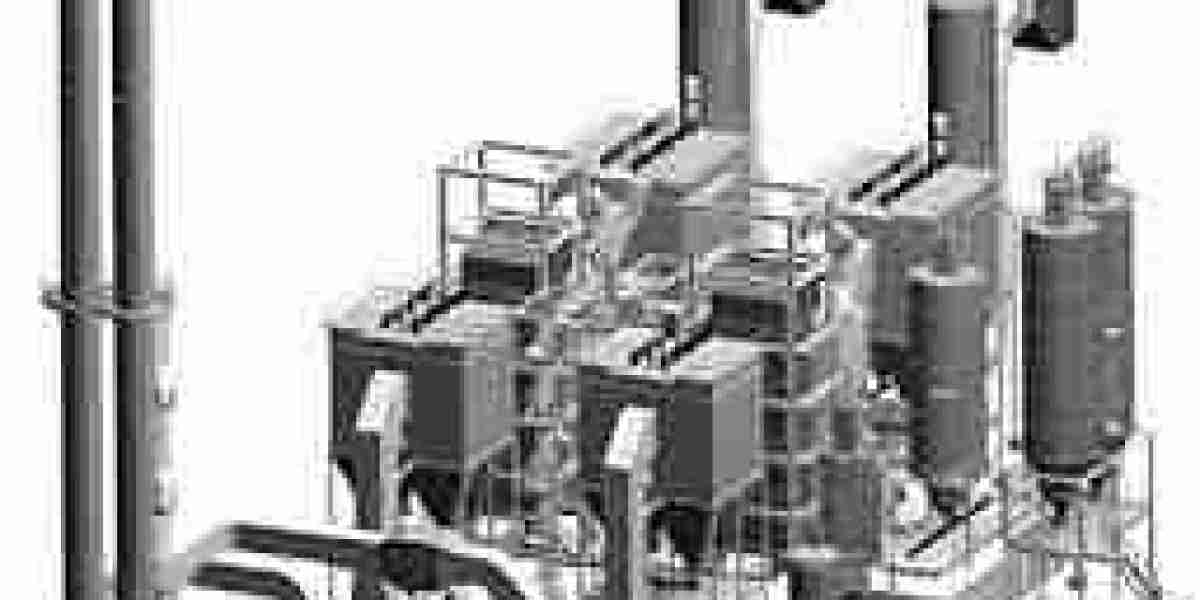The industrial flue gas treatment market is experiencing significant development as industries worldwide respond to increasing environmental regulations, public awareness, and sustainability goals. This market revolves around technologies designed to remove harmful gases such as sulfur dioxide (SO₂), nitrogen oxides (NOₓ), particulate matter, and mercury from the exhaust flue gases generated during industrial processes. The growing focus on environmental protection and industrial compliance is prompting rapid advancements and infrastructure upgrades across multiple sectors. This article explores the major developments shaping the market, including innovation, policy impact, and industry expansion.
Technological Advancements Fueling Market Development
The development of the industrial flue gas treatment market is closely tied to technological progress. Over the past decade, flue gas treatment systems have evolved from basic pollutant removal setups into advanced, multi-functional, and smart systems capable of handling diverse industrial emissions more efficiently.
Key innovations include:
Integrated multi-pollutant treatment systems, allowing simultaneous removal of SO₂, NOₓ, mercury, and particulate matter.
Dry and semi-dry scrubbers, which reduce the reliance on water resources and are easier to maintain.
Advanced electrostatic precipitators (ESPs) and baghouse filters, optimized for improved particulate removal in energy and cement plants.
Digital technologies, such as AI and IoT-enabled emission monitoring systems, enabling real-time analytics, predictive maintenance, and regulatory reporting.
These advancements are driving down operational costs, improving emission control accuracy, and making the systems more adaptable to various industrial environments.
Regulatory Framework as a Catalyst
One of the strongest contributors to market development is the global shift toward tighter environmental policies. Governments and international environmental organizations are prioritizing emission control across all major industries. These frameworks are both compelling existing facilities to upgrade and encouraging new industrial projects to incorporate emission management from the design phase.
United States: The Clean Air Act continues to shape emission control strategies in power generation and manufacturing.
European Union: The Industrial Emissions Directive (IED) mandates the implementation of Best Available Techniques (BAT) for emission reduction.
China: Through its “Blue Sky Protection” initiative, China is requiring industries to meet tougher air quality standards.
India: The government has mandated the installation of Flue Gas Desulfurization (FGD) units in coal-fired power plants, fostering significant market activity.
This policy-driven market development ensures a consistent demand trajectory for both new installations and retrofitting of outdated systems.
Expansion Across Key Industrial Sectors
The development of the industrial flue gas treatment market is also being driven by rising demand from critical industries such as:
Power generation: Coal- and gas-fired power plants are among the largest sources of industrial emissions and continue to invest in large-scale treatment systems.
Cement and steel production: These energy-intensive sectors are increasingly adopting ESPs and baghouse filters to reduce particulate emissions.
Chemical and petrochemical industries: These industries are adopting specialized treatment systems for volatile organic compounds and hazardous gases.
Waste incineration: Municipal and industrial waste management facilities are integrating flue gas treatment to comply with health and safety regulations.
This diverse industrial demand ensures that the market is not reliant on any single sector and offers widespread growth opportunities.
Retrofitting and Upgrading Aging Infrastructure
Another noteworthy development is the trend of retrofitting older industrial plants. Many facilities built before stringent environmental norms were introduced are now undergoing upgrades to meet current emission standards. Retrofitting offers a cost-effective alternative to constructing new plants and is becoming a key area of development.
Modernization of flue gas treatment systems allows older facilities to extend their operational life, improve energy efficiency, and reduce their environmental footprint—creating a continuous revenue stream for system providers and service firms.
Regional Development Trends
Asia-Pacific: Leading the global market in terms of development due to industrial growth, rising pollution levels, and robust regulatory actions. Countries like China, India, and Indonesia are investing heavily in large-scale systems.
North America and Europe: These are mature markets focusing on innovation, replacement, and advanced digital integration into existing systems. Both regions emphasize ESG goals and sustainable industrial practices.
Middle East and Africa: Emerging markets are beginning to adopt flue gas treatment systems as they expand their power generation and manufacturing capacities.
Latin America: Industrial modernization and government initiatives are encouraging development, especially in urban centers and industrial hubs.
Challenges and Areas for Further Development
While the market is advancing, certain challenges remain:
High initial investment: Capital costs for installation and integration remain high, especially for small- and medium-sized industries.
Technical expertise: Some regions lack the skilled labor and technical resources required to operate and maintain complex systems.
Inconsistent enforcement: Weak regulatory enforcement in some countries slows down the pace of adoption and market expansion.
To address these issues, governments and companies are investing in training programs, public-private partnerships, and financial incentives to make adoption easier and more widespread.
Conclusion
The industrial flue gas treatment market is experiencing strong development, fueled by technological progress, regulatory enforcement, industrial diversification, and a growing global commitment to environmental protection. As emission standards become more stringent and industries adopt ESG-aligned practices, flue gas treatment systems are transitioning from optional upgrades to essential infrastructure. Companies that innovate, localize their offerings, and align with sustainability goals will be well-positioned to lead in this rapidly evolving and crucial market space.


